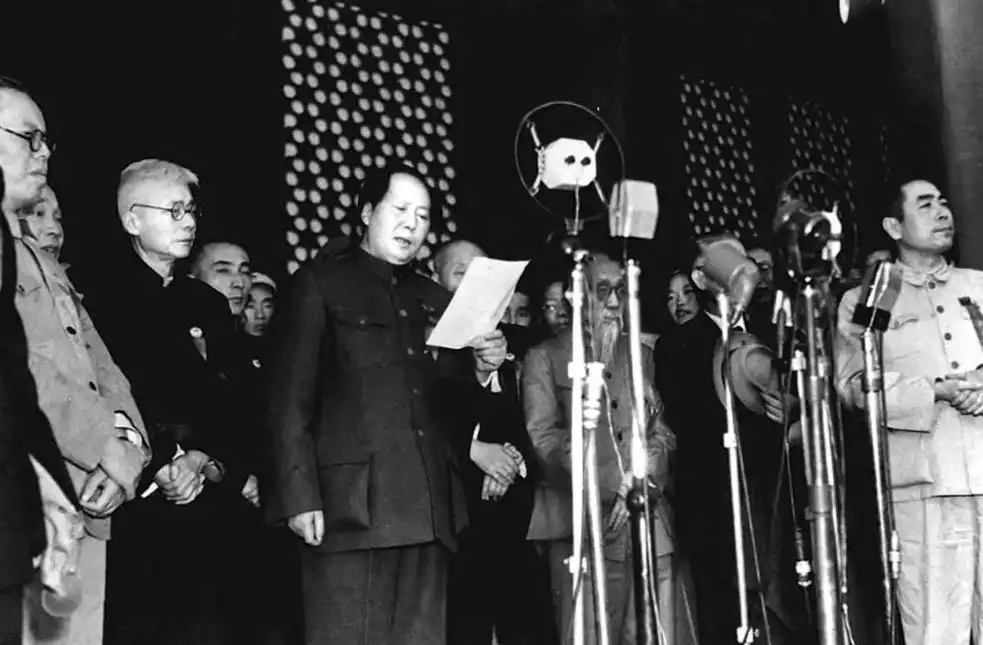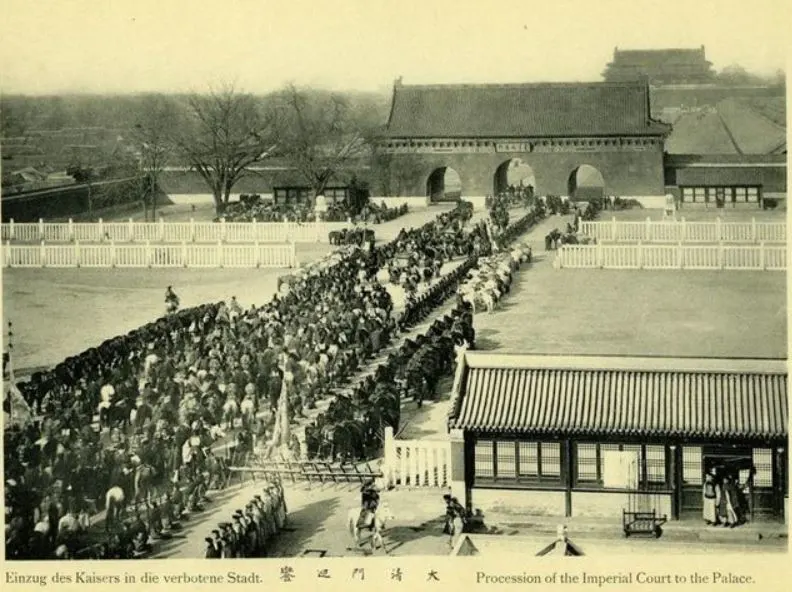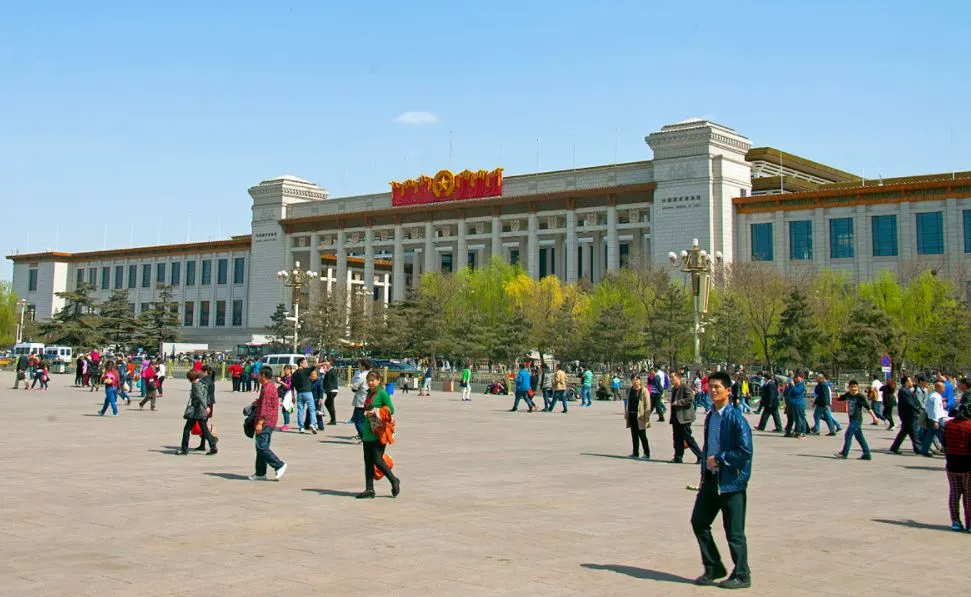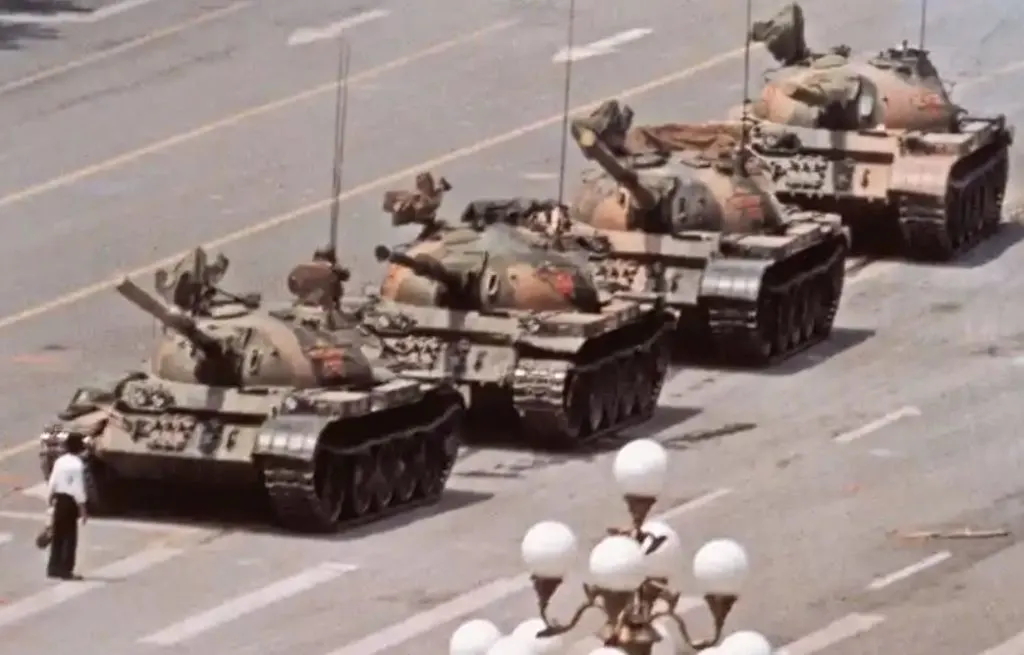One of the greatest squares in the world can be found near the Central Business District of Beijing, the capital of the People’s Republic of China.
In this article, we take a closer look at some of the most interesting facts about Tiananmen Square and its important and turbulent history.
1. The square is located right in the heart of Beijing
Tiananmen Square, also sometimes referred to as “Tian’anmen Square,” is located right in the heart of the city of Beijing, the capital of the People’s Republic of China, and near the Central Business District of the city.
With an estimated population of over 21 million people, the city in northern China is also one of the biggest metropolises in the world.
The square has an extremely rich history and is considered to be one of the most important cultural locations in all of China. It also features multiple of the country’s most famous landmarks.

2. It’s named after the monumental gate located at its northern end
The square was named after the Tiananmen, a gate also called the “Gate of Heavenly Peace.” This is the main gate of the Imperial City, famously known for being the location of the popular “Forbidden City,” one of the most famous palace complexes in the world.
The first version of this monumental entrance was built during the Ming Dynasty in 1420. This gate ended up being rebuilt in the 17th century and stood here for nearly 300 years.
The current gate stands on the northern end of Tiananmen Square and was rebuilt between 1969 and 1970. The external of the gate pretty much remained exactly as it was since the 17th century.

3. It’s one of the biggest city squares in the world
The first thing you notice about Tiananmen Square is that it’s enormous in size. It has a length of 765 by 282 meters (2,509 by 925 feet) and covers a total area of about 440,000 square meters (4.7 million square feet).

This makes it the 7th-largest city square in the world, and even though it’s huge, it’s still only a fraction of the actual largest city square in the world.
This honor is reserved for the Xinghai Square in Dalian, China, which covers an area of 1.76 million square meters (1.9 million square feet). This is quite an enormous public space, don’t you think?

4. The most important moment in the country’s history happened here
The People’s Republic of China was established on October 1, 1949. The leader of the Communist Party of China, Mao Zedong (1893-1976), conducted the so-called “Proclamation of the People’s Republic of China” on Tiananmen Square.
This not only meant the end of the “Republic of China,” but also resulted in Beijing becoming the capital of the newly established country.
This event is still celebrated on the square every year on October 1, often with imposing military parades. These parades initially happened every year but at the moment only happen once every decade.

5. The original square on this location dates back to the 17th century
Even though the area had been very important since at least the 15th century with the construction of the monumental entrance gate to the Imperial City, the actual square was only built in the 17th century.
The first version of Tiananmen Square was established in 1651, together with the construction of the new monumental gate. This version of the square was only about 1/4th the size of the immense square we know today.

6. A ceremonial gateway on the square was demolished in 1954
The Gate of Heavenly Peace wasn’t the only monumental gate on the square. In about the center of the modern-day square, there was another gate that went by a wide variety of names during its history.
This ceremonial gate was originally known as the “Great Ming Gate” during the Ming Dynasty and formed the ceremonial southern entrance to the Imperial City.
As one might expect, it was renamed the “Great Qing Gate” during the Qing dynasty, and eventually the “Gate of China” during the Republican era between 1912 and 1949.
Even though this gate ended up being demolished in 1954, this 3-arched gate had served its symbolic purpose of “Gate of the Nation” for hundreds of years. This means it was one of the most important landmarks in China for all this time.

7. The square was greatly expanded in the late 1950s
This ceremonial gate wasn’t demolished for no reason, because the founding father of the People’s Republic of China had great plans with the square.
Mao Zedong had the ambition to turn Tiananmen Square into the greatest urban space in the world during the 1950s, allowing it to hold over 500,000 people.
The great expansion of the square started in November 1958 and was completed in August of the year 1959. Many redundant structures and residential properties were demolished in the process, creating one of the largest public spaces in the world which was 4 times the size of the original square.

8. The “10 Great Buildings” were built in the late 1950s as well
At the same time that buildings were demolished to expand the square, new buildings were constructed. The main project was the construction of the so-called “Ten Great Buildings,” built in honor of the tenth anniversary of the founding of the People’s Republic of China.
These 10 buildings were built at both an incredible scale and pace and include:
- The Great Hall of the People
- The National Museum of China
- The Cultural Palace of Nationalities
- The Beijing railway station
- The Workers’ Stadium
- The National Agriculture Exhibition Hall
- The Diaoyutai State Guesthouse
- The Minzu Hotel
- The Overseas Chinese Hotel
- The Chinese People’s Revolutionary Military Museum
Of these fascinating buildings, the Great Hall of the People, a monumental government building that houses the Congress of the People, is located on the western side of Tiananmen Square, and the National Museum of China on the eastern side.

9. The southern part of the square is decorated with a huge obelisk
Another one of those intriguing facts about Tiananmen Square is that it’s completely flat, which furthers strengthens the impression that it’s enormous.
Together with the expansion phase and the 10 Great Buildings, a monument was erected in the southern part of the square as well which perfectly contrasts the flatness of the open space.
This monument is called the “Monument to the People’s Heroes” and was built in honor of the martyrs who struggled during the revolutions of the 19th and 20th centuries in China.
The structure takes on the form of an obelisk with a flat top. It was constructed between August 1952 and May 1958 and stands 38 meters (125 feet) tall.

10. The founding father of the Republic is on public display here
One of the most popular landmarks on the square is at the same time a rather macabre tourist attraction. It’s called the “Mausoleum of Mao Zedong” and as its name suggests, this famous mausoleum is the final resting place of this Chinese communist revolutionary.
His mummified body is on public display in this peculiar building, similar to how the embalmed body of Vladimir Lenin is on public display at his mausoleum located on Red Square in Moscow, Russia.
What’s remarkable about this attraction is that it was Zedong’s wish to be cremated. They ended up embalming his body anyways shortly after he died so it could be displayed inside a cooler and glass coffin in the central room of this building.

11. One of the most iconic pictures of all time was taken here in 1989
Unfortunately, most people remember the Square for a tragic event that happened here in 1989. This is referred to as the “1989 Tiananmen Square protests” worldwide and the “June Fourth Incident” in China (yes they prefer to use a euphemistic term for slaughtering).
The protests had already started on April 15 and by June 4, martial law was announced to break down the protests once and for all. Everybody standing in the way of the advancing soldiers and tanks was gunned down.
The estimated 300,000 troops that invaded Beijing that day caused a bloodbath. Even though there aren’t any official numbers, the death toll is believed to have been in the thousands as both troops and tanks fired at the demonstrators.
One of the most iconic pictures ever taken was that of the so-called “Tank Man,” a scene in which one unidentified man blocks a row of tanks approaching the square. It’s considered to be one of the most iconic images of all time.

12. An arts center called “The Giant Egg” was built right next to it
One of the most amazing opera houses in the world is located in a fascinating arts center on the western edge of the square. This arts center is officially known as the “National Centre for the Performing Arts” but is commonly referred to as “The Giant Egg” because of its distinctive shape.
This modern building was constructed between 2001 and 2007 and designed by French architect Paul Andreu (1938-2018). Apart from the opera hall, this enormous complex also features a music hall, a theater, and various art exhibition halls.
It’s the largest theater complex in all of Asia and its modern design is a remarkable sight in between the numerous traditional Chinese structures surrounding it on one of the most famous squares in the world!

